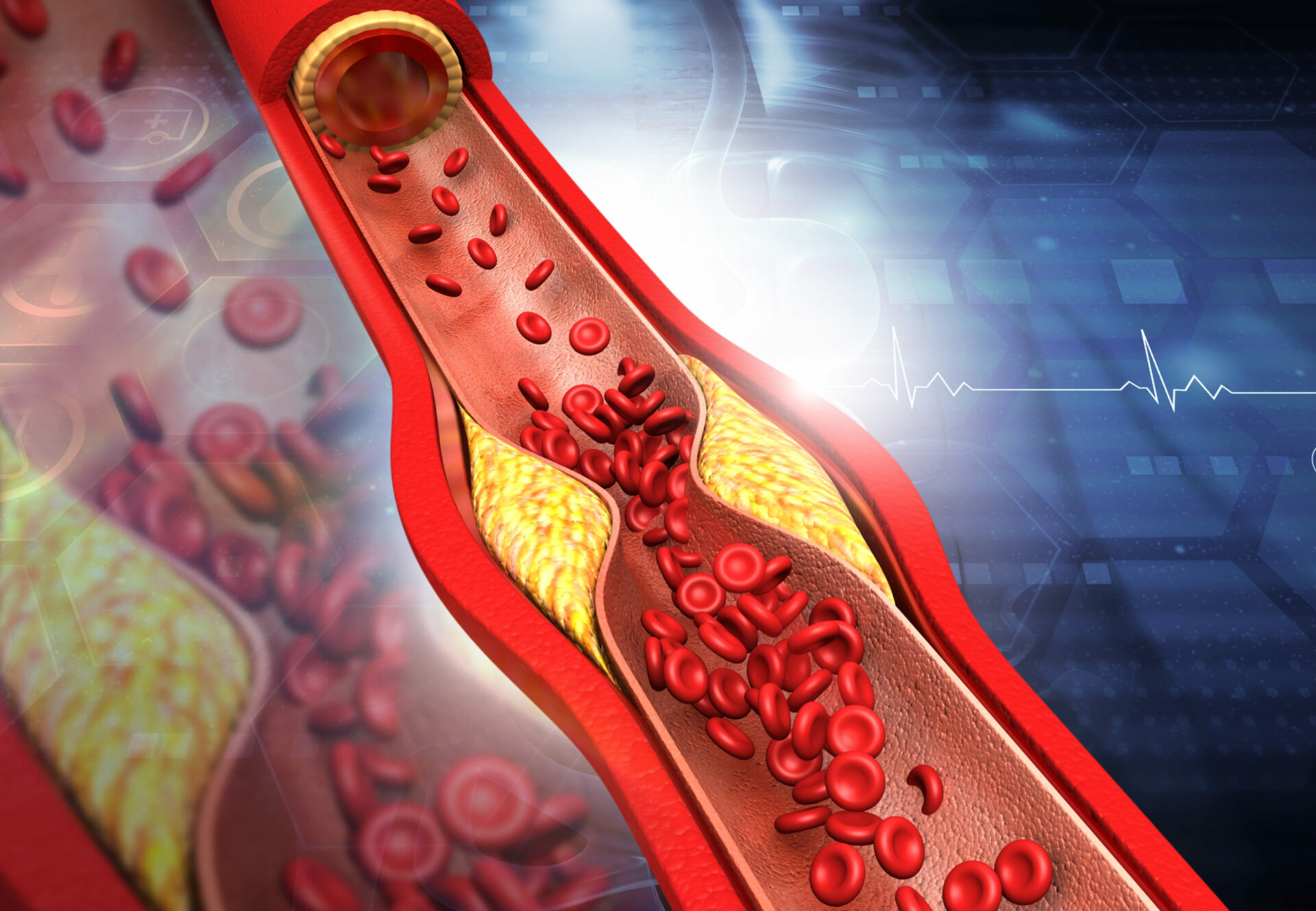Vascular diseases mainly affect medium- and large-calibre arteries, such as the aorta, femoral artery, carotid artery or coronary artery of the heart. They are caused by a process of remodelling of the artery walls known as atherosclerosis, which starts as a simple lipid deposit and develops into a more or less protruding atheromatous plaque that impedes the flow of blood. It can also rupture, thrombose and obstruct the artery lumen, or be the source of clots that become blocked elsewhere in the circulation. Cardiovascular diseases are linked to the natural history of atherosclerotic plaques: myocardial infarction to the obstruction of a coronary artery, stroke to the detachment of an embolus from a plaque, hypertension to the abnormal stiffness of the walls of diseased arteries.
Mechanisms and natural history
The earliest event in the formation of atherosclerotic plaque is the deposition of lipids in the artery wall, known as lipid striae, which is favoured by the imbalance between dietary intake, circulating levels and elimination of cholesterol, as well as local abnormalities in blood flow, turbulence and hyperflow. These lipid deposits are eliminated by an inflammatory process, which eventually leads to the accumulation of cellular debris and the formation of atherosclerotic plaque, which grows. The strength of this plaque is a major aspect of cardiovascular disease, and depends on its degree of fibrosis, i.e. the fibrous cap. Under certain conditions, enzymes, proteases secreted by inflammatory cells, will digest the fibrosis, the cap will become more fragile, the plaque will crack and erode, with a risk of sudden formation of blood clots which may obstruct the lumen of the artery or migrate into the circulation in the form of emboli and become blocked in a small-calibre vessel, for example those in the brain.
Treatment of atherosclerosis
Atherosclerosis is the area of medicine where the notion of prevention and personalised medicine comes into its own. A distinction is made between primary prevention, which aims to avoid the onset of symptoms and complications of the disease, and secondary prevention, which is applied once the disease has been declared in order to prevent its worsening. In both cases, the first target is the fight against the risk factors for atherosclerosis, i.e. poor diet and hygiene, smoking, a sedentary lifestyle, high blood pressure, diabetes, etc
The therapeutic revolution in atherosclerosis has come from the development of drugs that prevent the accumulation of cholesterol in the artery walls, the central event in the formation and aggravation of atherosclerotic plaque.
Several therapeutic classes exist: statins, fibrates, ezetimibe, cholestyramine, alone or in combination. Statins reduce bad cholesterol levels (carried by LDL-c) by around 30% and reduce the risk of cardiovascular disease by 30 to 40%.
A new class of drugs has emerged, PCSK9 inhibitors, the result of a discovery by French (Catherine Boileaux) and French-speaking (Marianne Abi Fadel Lebanon, Nabil Seidah Canada) researchers. Extremely effective, but still expensive and difficult to use, PCSK9 inhibitors are reserved for populations at high risk of vascular disease.
There is also the treatment of inflammation, which has become an important target for preventing the progression of plaque and, in particular, the risk of fissuring and erosion.
Is there any research into this pathology?
Research efforts in this area are still considerable, with the aim of understanding the mechanisms responsible for the natural history of atherosclerotic plaques, their embrittlement and rupture, and how blood clots form.
ICAN’s response
The ICAN IHU teams are major players in this field.
- IHU researchers have been working for many years on cholesterol metabolism and the links between cholesterol and the activation of the inflammatory response. Other teams are studying how diabetes and obesity can be risk factors for cardiovascular disease.
- The ACTION group is conducting major multi-centre, international clinical trials into the treatment of cardiovascular disease, in particular the risk of thrombosis
- Its clinical teams are among the leaders in France in the treatment of cardiovascular disease.








